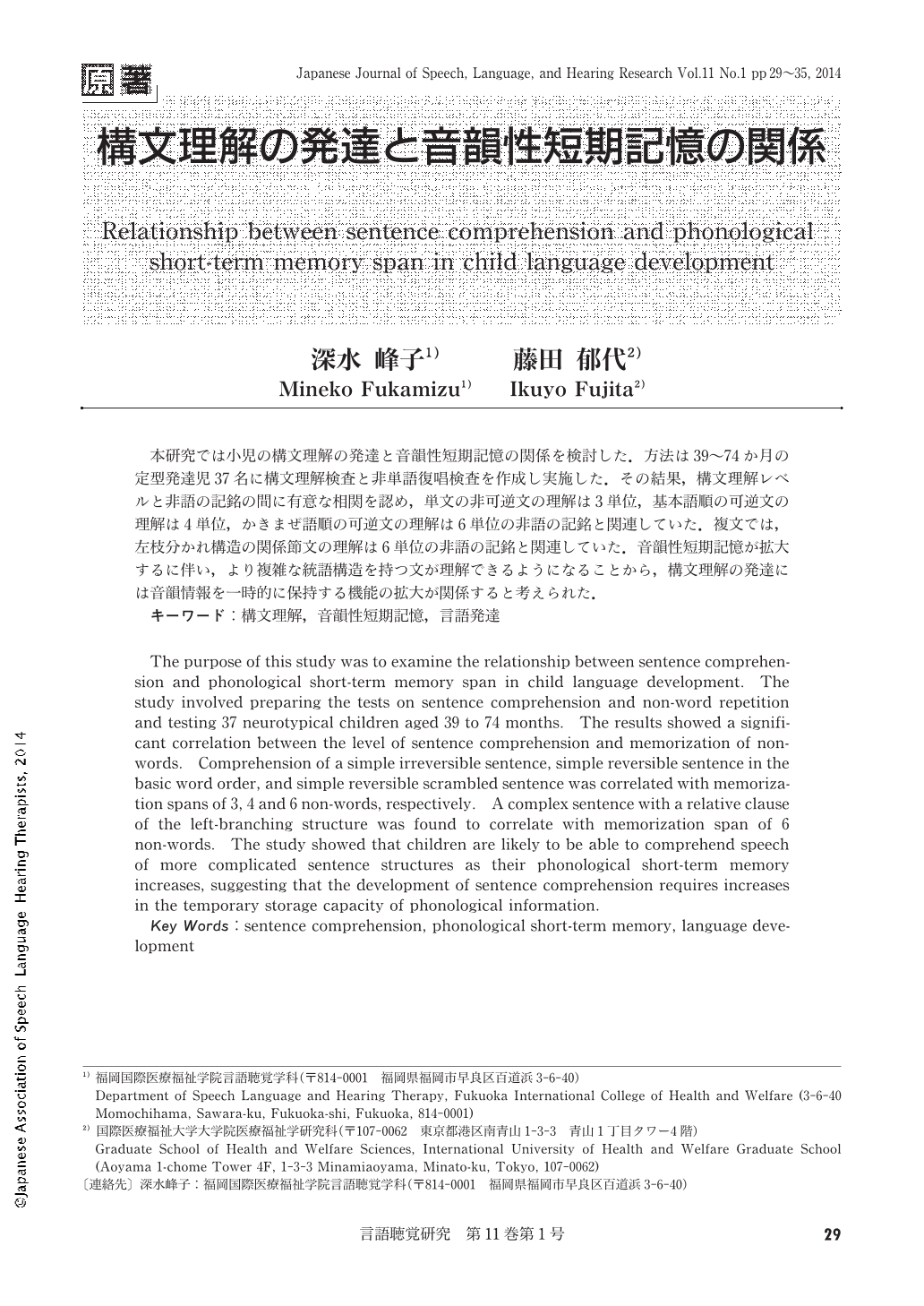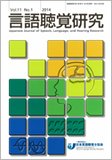Japanese
English
- 有料閲覧
- Abstract 文献概要
- 1ページ目 Look Inside
- 参考文献 Reference
本研究では小児の構文理解の発達と音韻性短期記憶の関係を検討した.方法は39~74か月の定型発達児37名に構文理解検査と非単語復唱検査を作成し実施した.その結果,構文理解レベルと非語の記銘の間に有意な相関を認め,単文の非可逆文の理解は3単位,基本語順の可逆文の理解は4単位,かきまぜ語順の可逆文の理解は6単位の非語の記銘と関連していた.複文では,左枝分かれ構造の関係節文の理解は6単位の非語の記銘と関連していた.音韻性短期記憶が拡大するに伴い,より複雑な統語構造を持つ文が理解できるようになることから,構文理解の発達には音韻情報を一時的に保持する機能の拡大が関係すると考えられた.
The purpose of this study was to examine the relationship between sentence comprehension and phonological short-term memory span in child language development. The study involved preparing the tests on sentence comprehension and non-word repetition and testing 37 neurotypical children aged 39 to 74 months. The results showed a significant correlation between the level of sentence comprehension and memorization of non-words. Comprehension of a simple irreversible sentence, simple reversible sentence in the basic word order, and simple reversible scrambled sentence was correlated with memorization spans of 3, 4 and 6 non-words, respectively. A complex sentence with a relative clause of the left-branching structure was found to correlate with memorization span of 6 non-words. The study showed that children are likely to be able to comprehend speech of more complicated sentence structures as their phonological short-term memory increases, suggesting that the development of sentence comprehension requires increases in the temporary storage capacity of phonological information.

Copyright © 2014, Japanese Association of Speech-Language-Hearing Therapists. All rights reserved.


